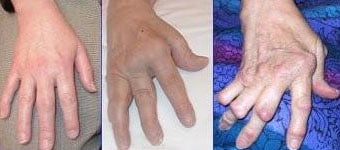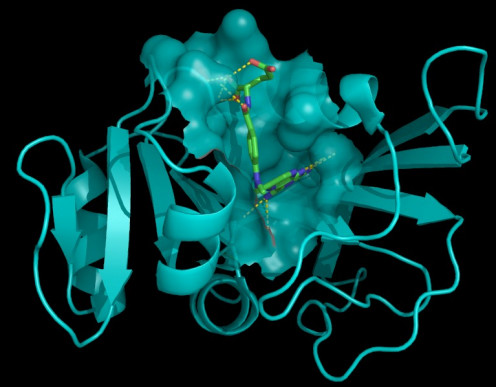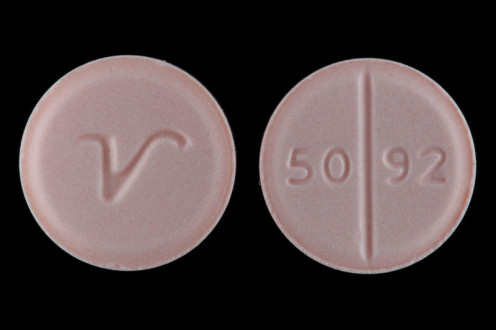Conventional Rheumatoid Arthritis Treatments

Rheumatoid arthritis is a degenerative condition that can lead to crippling deformities. It is an autoimmune disease caused by the immune system mistaking the body’s own tissues for foreign invaders and attacking them. This causes chronic inflammation which leads to the characteristic deformities of the disease.
Because rheumatoid arthritis can be so painful, there are a number of different treatments available most of which are pharmaceuticals. The most common of these include painkillers for pain management and Disease-Modifying Antirheumatic Drugs or DMARDS. Other treatments include physical and occupational therapy and surgery.
Medications for Rheumatoid Arthritis
Disease-Modifying Antirheumatic Drugs (DMARDS) are the most common and most successful medications used in the treatment of rheumatoid arthritis. These drugs not only reduce pain, they also slow down the degeneration process the disease causes.
Probably the most well-known of these medications are Methotrexate and Plaquenil (hydroxychloroquine). Methotrexate is by far the most commonly prescribed, but Plaquenil is a very close second.

Methotrexate was originally used as a chemotherapy drug, but it is now mainly used as an immunosuppressant. It works by inhibiting the metabolism of folic acid. More specifically it inhibits dihydrofolate reductase.
Plaquenil is a bit different. It is an antimalarial drug that is most commonly used to treat autoimmune diseases such as rheumatoid arthritis and Sjogren’s syndrome. It works by reducing the inflammation caused by the immune response.
Other immunosuppressant medications used to treat the underlying cause of rheumatoid arthritis include:
- Arava (leflunomide)
- Myochrysine (injectable gold)
- Neoral (cyclosporine)
- Imuran (azathioprine)
- Humira (adalimumab)
- Orencia (abatacept)
- Enbrel (etanercept)
- Remicade (infliximab)

Steroids are another type of medication that can be used to treat the inflammation caused by rheumatoid arthritis. The most common of these are Prednisone and Celestone (betamethasone).
Sometimes the above medications can alleviate much of the pain the disease causes; however, there are times when these medications merely “take the edge off.”
In these cases, the patient often requires the use of pain management medications such as opiate painkillers and anti-inflammatories. The most common of these include:

- Vicodin (hydrocodone)
- Oxycodone
- Ultram (tramadol)
- Celebrex (celecoxib)
- Mobic (Meloxicam)
- Indocin (Indomethacin)
- Clinoril (sulindac)
- Voltaren (diclofenac) oral or gel form
- Ibuprofen
- Naproxen sodium
- Aspirin
The main problem the pharmaceutical treatment of rheumatoid arthritis is the side effects the drugs can cause. For example, Plaquenil can cause a red/green deficiency in a patient’s color vision known as “Plaquenil toxicity” or “cholorquine retinopathy.” This side effect is irreversible and becomes progressively worse as treatment progresses. Discontinuing treatment can help prevent further damage to the retina, but it will not reverse damage that has already been done.

Treating Rheumatoid Arthritis with Physical & OccupationalTherapy
Treatment for RA can also involve occupational and physical therapy. Physical therapists will help you to maintain some flexibility, and occupational therapists will help you to maintain the ability to continue your daily activities.
Physical therapy will focus on function of the joints, muscle strength and overall level of fitness. Since these therapists focus on the joints and muscles they are able to suggest exercises that will keep the joints flexible and strengthen the muscles, which will help minimize pain and improve (and maintain) coordination.
Along with exercises, physical therapists can also employ a variety of other treatments including heat and ice therapy, as well as massage. For those with chronic pain, these treatments can be indispensable in helping to alleviate pain at home.
Occupational therapy will help you maintain your independence. An occupational therapist can help you find the easiest way of doing a mundane, yet frustrating, activity as well as evaluate what you might be doing or how you may be doing it that may be causing unnecessary strain on your joints.
They can then suggest changes that may help you to accomplish a task more efficiently, or an alternative way to doing something that makes the task much easier to accomplish. They may also be able to suggest a device that may assist you in your daily activities.
Treating Rheumatoid Arthritis with Surgery
Although most commonly a last resort, surgery can be the best option for those with RA. Typically, RA surgery involves replacing a hip or knee joint. The weight bearing joints are usually the most painful in people with this disease.
There are other procedures that can be performed including:
- Carpal tunnel release
- Synovectomy
- Joint (or bone) fusion
Carpal tunnel release is usually performed to alleviate pressure on a nerve in the hand. Because the fingers and hands are used so frequently, this type of surgery is becoming more common. This is also the reason hands and digits are commonly affected by RA.
Synovectomy involves removing the lining (or synovium) surrounding the joint in an effort to prevent it from eroding away the cartilage found on the tips of the bones that comprise the joint. Sometimes this surgery ends up having to be repeated because the synovium does eventually grow back.
Joint fusion or arthrodesis can be used to alleviate pain in many joints including:
- Hip
- Ankle
- Fingers
- Thumbs
- Spine
- Wrists
In arthrodesis, the joint itself is essentially removed by fusing the two bones together that create the joint. While this does alleviate any further pain and inflammation, it also severely limits a person’s mobility in the fused joint. This is especially difficult when several joints in the spine are fused together. Many patients end up unable to turn their neck or bend their back.
© Copyright 2013 - 2015 by Melissa "Daughter of Maat" Flagg ALL RIGHTS RESERVED








